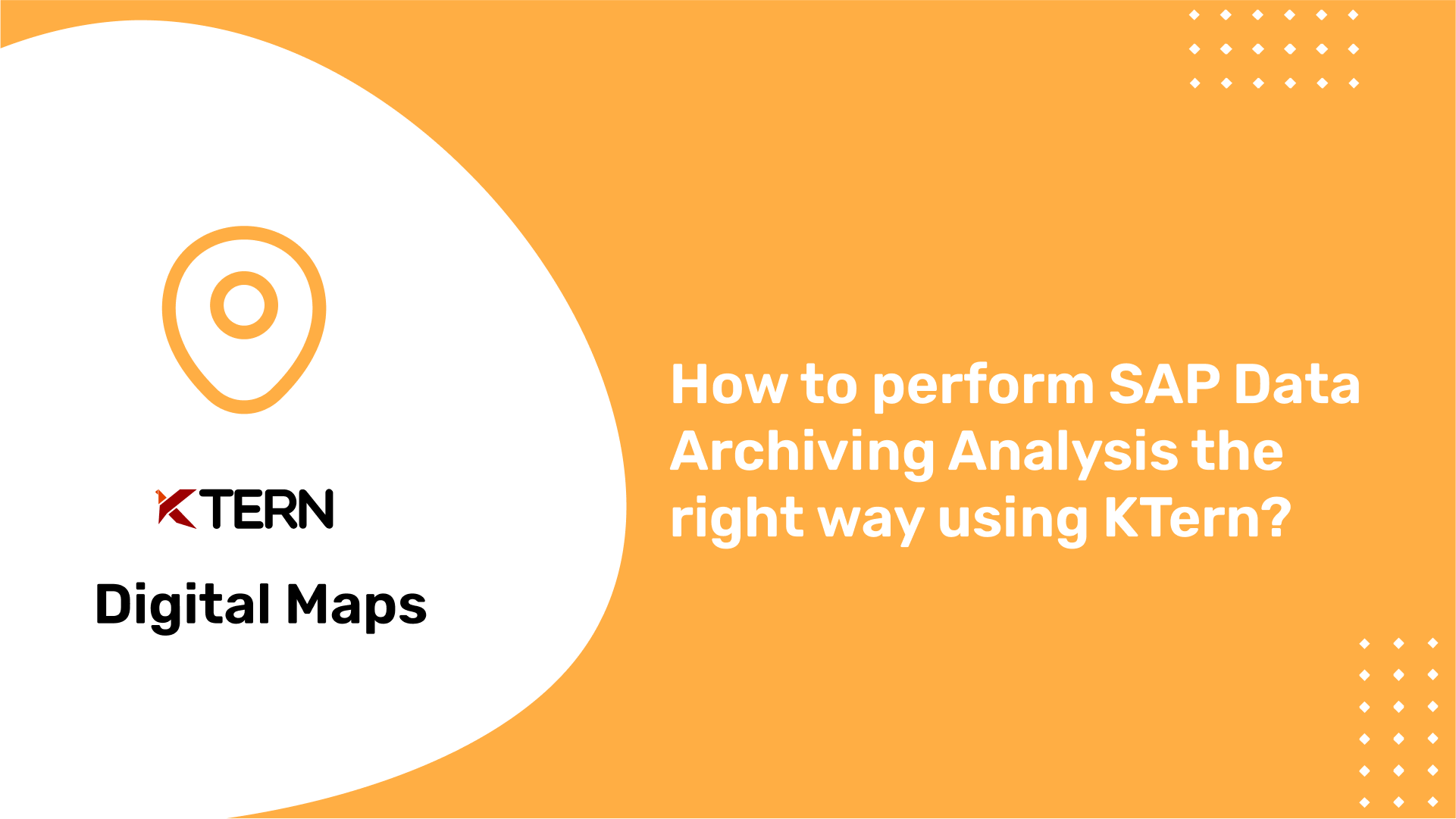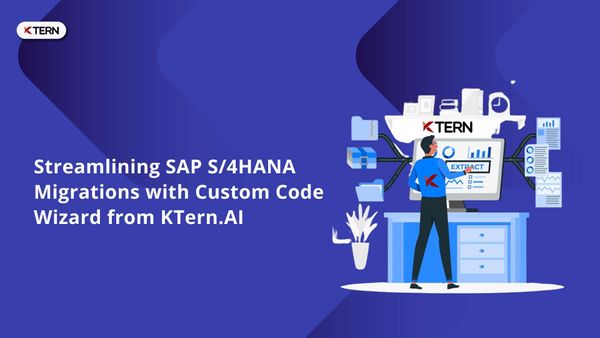How to perform SAP Data Archiving Analysis the right way using KTern.AI?
One of the most important steps before moving to S/4HANA is to plan the SAP Data Archiving. You can migrate certain data to S/4HANA and archive some data in an external system. Many customers might not have archived their data at all. Some data might even date back to their Go-Live twenty years ago.
In this article, we’ll explain how KTern provides SAP data archiving recommendations by assessing the ECC system. KTern provides the data archiving recommendations in the Discover phase of the Activate Methodology and it is part of the Impact Analysis Module.
In addition, you can find out SAP S/4 HANA Assessment by using KTern in this article.
TABLE OF CONTENTS
- Introduction
- Importance of SAP Data Archiving before S/4HANA Migration
- Advantages of SAP Data Archiving
- KTern’s Data Archiving Recommendations
- Features of KTern’s Data Archiving Recommendations
- Documents Archiving Potential
- Table Archiving Potential
- Custom programs archiving potential
- Inferences from SAP Data Archiving Recommendations
- Other products in the Market
- Conclusion
- Next Steps

Introduction
"Are you planning to migrate to SAP S/4HANA but unsure of how to handle data archiving? Archiving data before migrating to S/4HANA is crucial to reducing costs and improving system performance.
In this blog, we will explore the importance of SAP data archiving before S/4HANA migration, the advantages it offers, and how KTern's Data Archiving Recommendations can aid in this process. From identifying data objects, tables, and documents to archive, to providing detailed reports on archiving potential, KTern's all-in-one product suite is built to guide and ease the transition from SAP ECC to SAP S/4HANA.
Join us as we dive into the world of data archiving and learn how to perform it the right way using KTern."
Importance of SAP Data Archiving before S/4HANA Migration
SAP S/4HANA runs on the latest in-memory database platform, HANA. It can process terabytes of data without breaking a sweat owing to its columnar database structure. However, a significant amount of running S/4HANA in the future will be the need for large amounts of RAM to run the in-memory database. The in-memory database is approximately five times more expensive compared to the traditional database, as its license cost is based on volume.
In the pre-S/4HANA times, it was not unusual to store all the data in the database itself. Data from twenty years ago could be found in the database. Organizations usually do not invest in an additional archive system. But things are changing now.
It is essential to perform SAP data archiving before moving to S/4HANA, otherwise your expenses of running the latest ERP suite will increase by outrageous proportions. Although you may require access to a lot of data, you need not store it in the HANA database of the production system. Data archiving keeps the costs under control and organizations must consider it before moving to S/4HANA. Archival of data also reduces the timeline of the actual SAP S/4HANA system conversion drastically.
Advantages of SAP Data Archiving
In order to perform data archiving, you must first identify the data objects, tables and documents to archive from the production system. Then, you can take a call with the business stakeholders and archive that data.
The major advantages of SAP data archiving are:
- Reduces the costs of memory, disk and administration costs
- Ensures cost-efficient system upgrades and S/4HANA migration
- Improved system performance due to shorter response time
- Reduces the cost of maintenance and run of growing application infrastructure
- Secure access to data stored in the archive system
KTern’s Data Archiving Recommendations
KTern is an all-in-one product suite built for SAP Digital Transformations. With decades worth of SAP Tribal knowledge combined with automation, governance and collaboration capabilities, KTern is built to help the existing ECC customers migrate to S/4HANA. KTern covers the entire lifecycle and guides you before, during and after the conversion. Its inbuilt S/4HANAPEDIA rule engine combined with several modules eases the transition from SAP ECC to SAP S/4HANA.

With the Archiving Recommendations feature, KTern automatically analyses the system and identifies the documents, tables and custom programs which can be archived. You can then archive these data to any other third-party storage database.
Features of KTern’s Data Archiving Recommendations
SAP Data Archiving Process essentially involves three major steps:
- Creating archive files
- Running delete programs
- Storing the archive files
KTern provides a detailed report on archiving recommendations. The results are as follows:
- Documents archiving potential
- Tables archiving potential
- Custom programs archiving potential
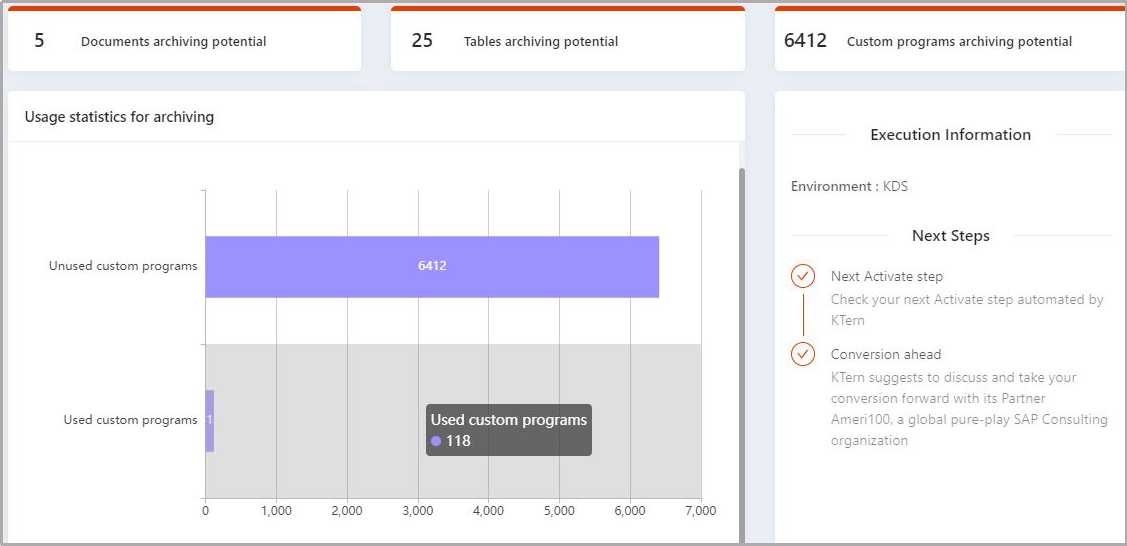
Documents Archiving Potential
KTern determines the potential documents in an SAP ECC system that you can archive. All types of documents such as Material Ledger documents, change documents, purchase documents can be archived. Archiving documents means that you delete data from the database and archive it in the file system. You can then store the data from the file system in external archives. You can thereby relieve the burden on your database at regular intervals.
Archiving takes place in two steps. The first step is to write the data to an archive file in the file system. Then you delete the data from the database based on this archive. You can still access data that you have archived to the archive file in the file system. If you need the data on the database again (for example, because you have to make changes to it or because you archived it by mistake), you can also reload archives.
Table Archiving Potential
KTern determines which objects archive the data records from a specific table or enables you to display all the tables for a specific archiving object. You can also call various statistics for the amount of used database space.
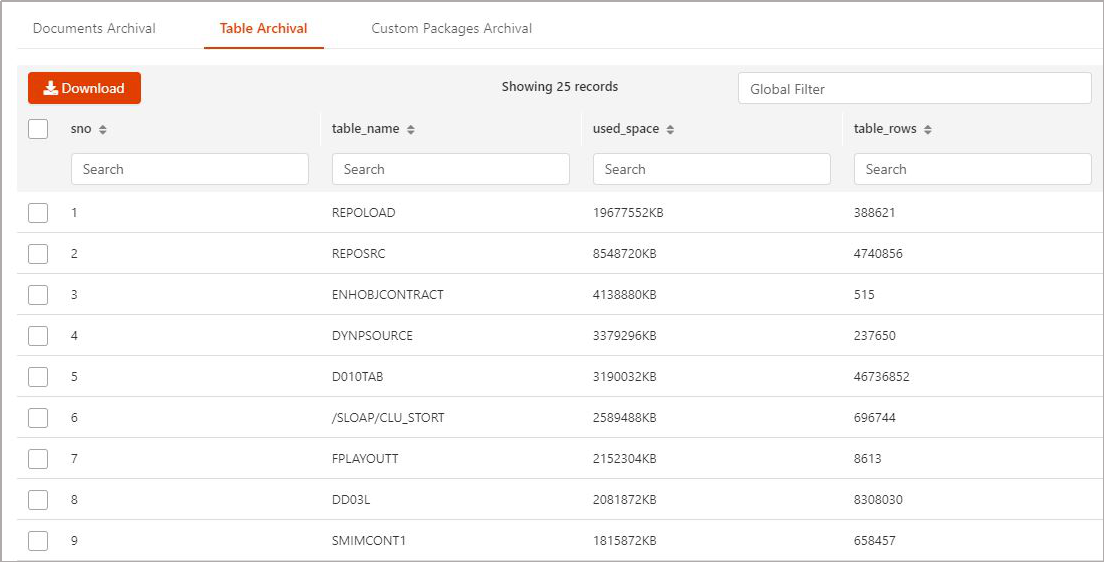
Custom programs archiving potential
All Standard SAP tables have corresponding archiving objects that can be configured to perform archiving based on the required conditions and at specific time periods. Since the development of SAP objects generally involves the creation of custom Z-Tables there may arise a need for the creation of custom archiving objects for the newly created tables.
Custom programs archiving potential
All archiving objects have the following reports linked to them to achieve end-to-end archiving.
- Write Program– To create an archive file and write the database table entries into it based on the selection criteria specified in the variant
- Delete Program– The Delete program is used to delete the records that are successfully archived and stored
- Reload Program– The reload program is used to retrieve the data stored in the selected archive file and update the records back into the table
- Pre-Processing Program – This program may contain some functionality to be carried out before data is archived and deleted from the database
- Post-Processing Program – This program may contain some functionality to be carried out after data is archived and deleted from the database
Inferences from SAP Data Archiving Recommendations
Project Managers, Solution Architects and the key Stakeholders from the customer side use this feature predominantly. In some countries, it is mandatory to store 5 years of system data or 7 years of system data. The customer can decide to archive their data based on KTern’s archiving recommendations and their country’s legal compliance.
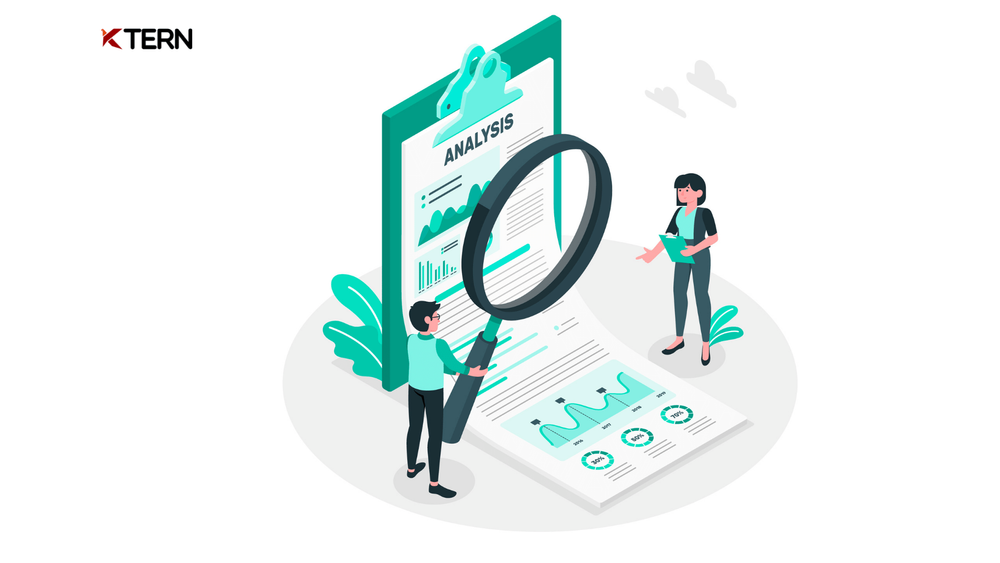
Moving to S/4HANA with minimal amount of data will not only ease the transition process but also reduce significant costs in the future.
Other products in the Market
Archiving Recommendations are also provided by SAP’s Readiness Check 2.0. However, it just gives an overview of the size and number of documents which you can archive. However, KTern provides a detailed analysis of the types of documents, the custom codes, and custom programs that you can archive.
Conclusion
KTern's Data Archiving Recommendations is an all-in-one product suite built to aid in SAP digital transformations and guide customers through the process of migrating to S/4HANA.
With its Archiving Recommendations feature, KTern automatically analyses the system and identifies documents, tables, and custom programs that can be archived.
By using KTern, organizations can keep their expenses under control and reduce the timeline of the actual SAP S/4HANA system conversion. In short, KTern is a powerful tool to help you keep your data archiving process organized and efficient.
Next Steps
Now that you know how to automate the SAP Custom Object Analytics in KTern and the deductions you can make out of it, you might want to get a first-hand feel of KTern and its other features which help automate and govern SAP projects from start to finish. You can get started with the same at Getting Started. Alternatively, if you would like a guided demo of the product from one of our product engineers, kindly get in touch with us by submitting a message at Contact Us.

